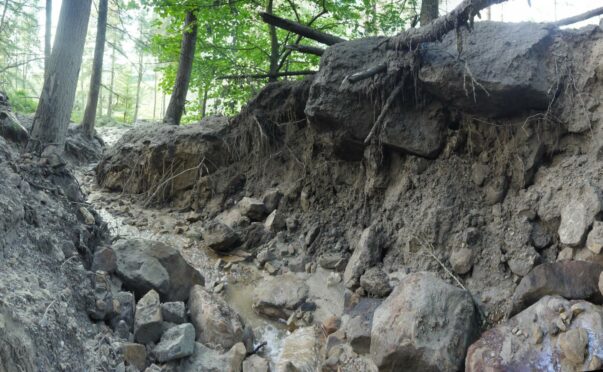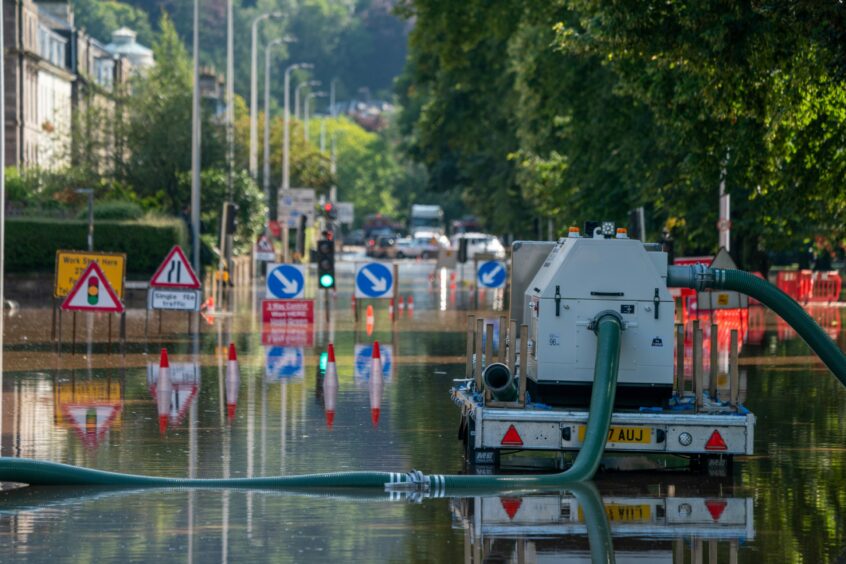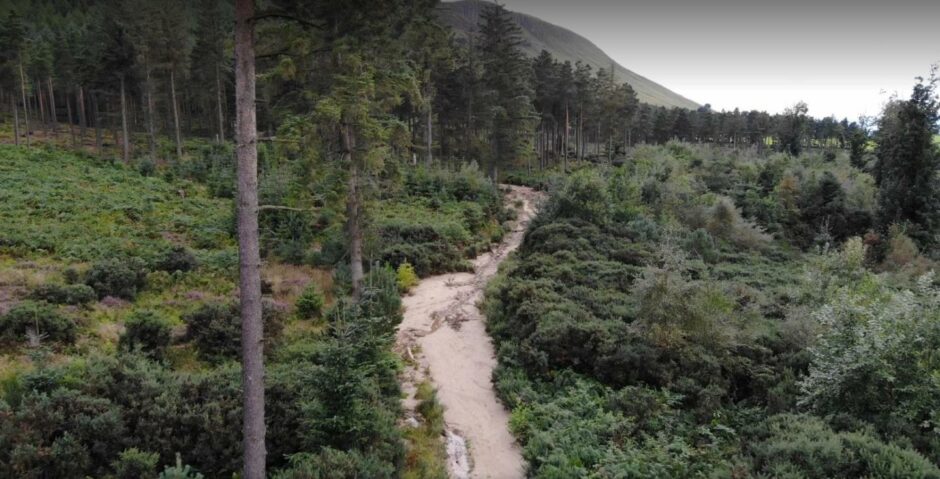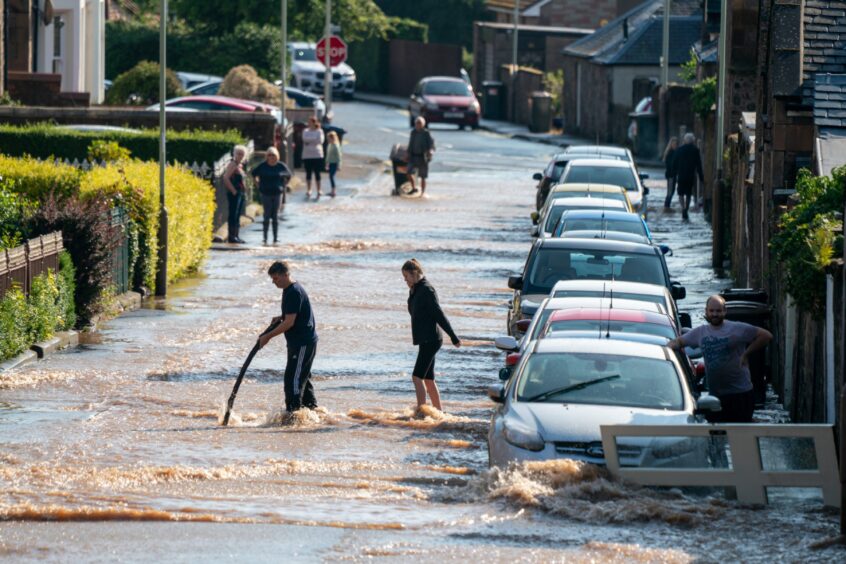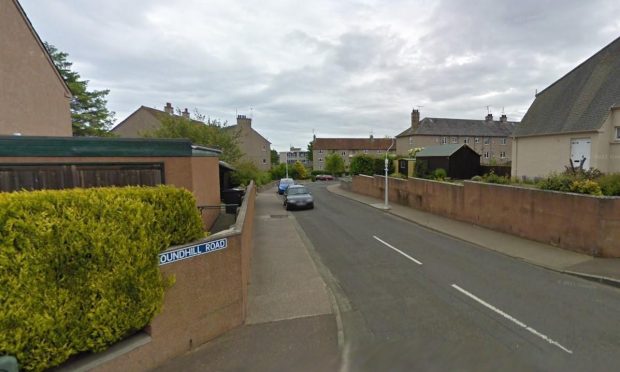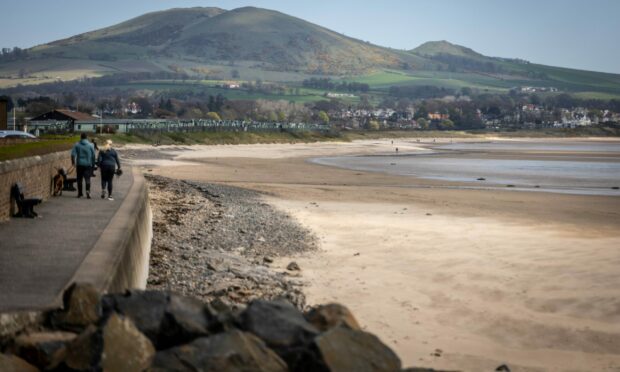Researchers have shown how climate change-linked storms are already transforming the Fife village of Falkland, with landslips powerful enough to level buildings.
Known around the world as a location for the TV series Outlander, a new study has shown how the landscape around Falkland is being permanently altered.
Experts at Dundee University’s geography and environmental science department found a storm on Lomond Hills had triggered landslips powerful enough to destroy buildings last year.
Academics looked at the impact a thunderstorm in August 2020 had on sites within the Lomond Hills, noting changes in the landscape prompted by intense rainfall.
Fife was battered by downpours during Storm Ellen and Storm Francis that same month.
Storm displaced boulders unmoved for centuries
The storms were described by the Met Office as two of the most notable in the last 50 years, with several parts of the country hit with heavy rainfall and strong winds.
Researchers noted the storm of August 11 left a “trail of destruction” across several regions, with hundreds of homes flooded and transport routes disrupted.
A separate storm cell also led to a fatal train derailment near Stonehaven.
Dundee University researchers said events such as these should be taken seriously, with boulders that would not have been moved for centuries on Lomond Hills displaced.
‘Acts of God’ becoming increasingly frequent
“We can no longer dismiss these events as one-offs,” said Dr Martin Kirkbride, a reader in geography and environmental science within the university’s School of Social Sciences.
“In the past these storms have been dismissed as extreme events or ‘Acts of God,’ but they are becoming increasingly frequent, and we need to plan for them.
“The storm we studied moved boulders which were up to three metres across.
“These would not have been moved for centuries and would have required tremendous amounts of force to be relocated.
“If a house had been in the path of such a boulder then it would almost certainly have been destroyed.
“There is a systematic change in our climate and these storms, and the consequences of these events are indicators of that.”
The intensity of the rainfall, described as “exceptional” by SEPA, saw rain gauges record over 50mm in three hours in Glenrothes, just miles from the Lomond Hills, rising to around 100mm overnight.
Dr Kirkbride and departmental colleague, Dr Andrew Black, visited the Lomond Hills in the aftermath to study its impact on the landscape, which included several small landslides and debris flows.
Upon closer inspection, they identified that one of these landslides had travelled more than a kilometre and contained boulders, soil and fallen trees.
It deposited more than 1,500 tonnes of debris, eroding a forest gully and devastating a local road.
Smaller landslides were triggered by pressurised water at the base of or within the soil, overcoming the strength of the soil layer and causing it to fail, similar to the debris flows that regularly block the A83 Rest and Be Thankful pass in the southwest Highlands.
With summer rainfall only expected to rise in the coming decades as a result of global warming, Dr Kirkbride said that recording isolated case studies now could reveal patterns in the years to come.
He added: “We cannot ascribe every individual event to climate change, but with careful observation we can detect shifts in the frequency of hazardous geomorphological processes and interpret the type of location that is susceptible to hazardous responses.
“Doing this means we will be better placed to mitigate these ‘natural’ hazards through policy, planning and weather forecasting.”
